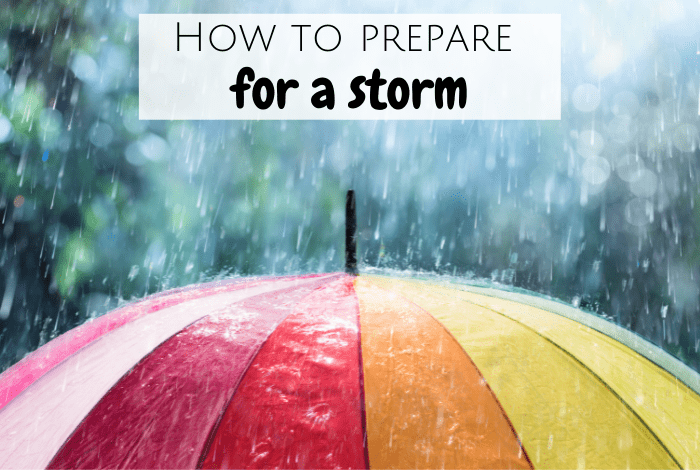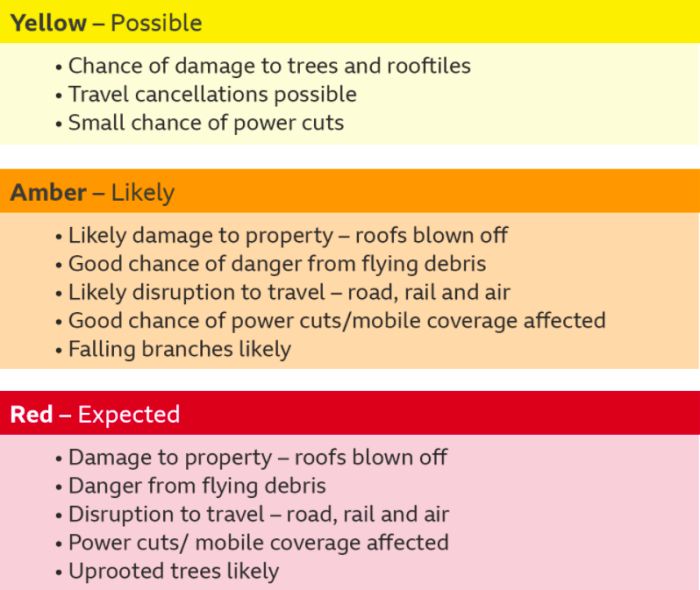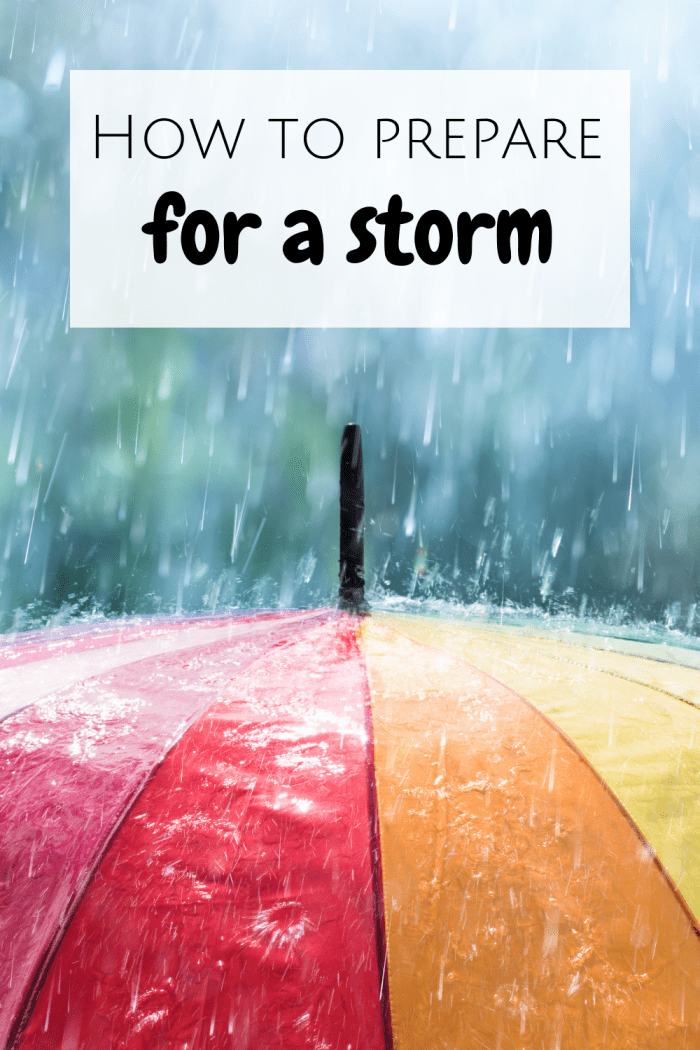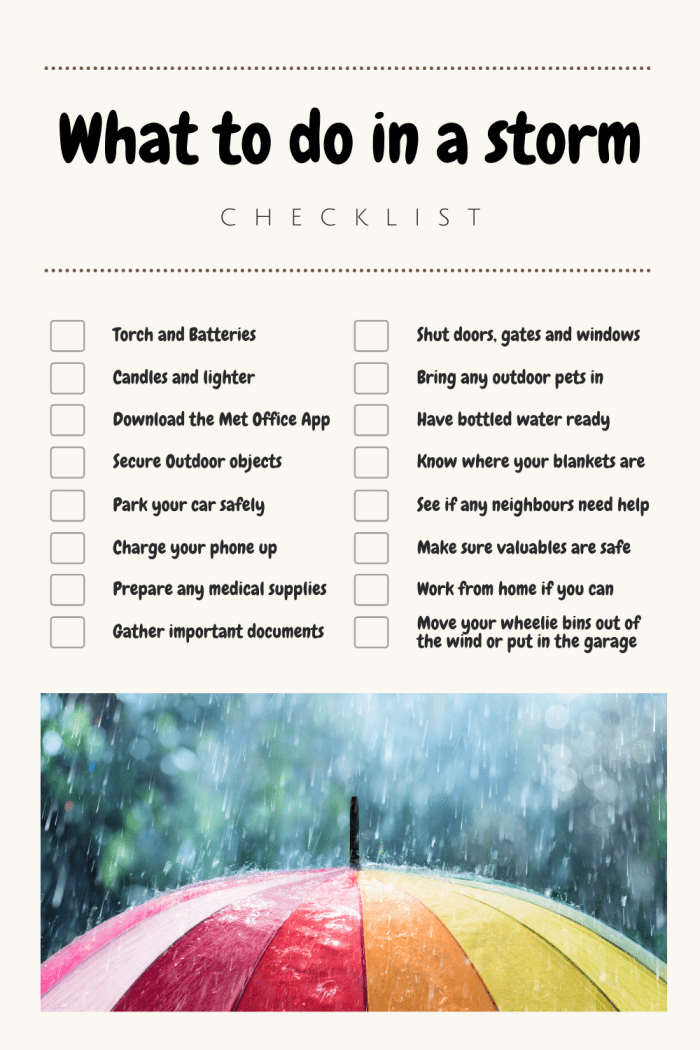OK, I can see the irony of me writing a post called ‘how to prepare for a storm’ whilst sitting on my bed watching the rain lashing down on my windows and listening to the wind howling around the house. But still, it’s what I’ve been Googling this morning so I thought I’d share what I’d learned.

But it has occurred to me just how woefully unprepared I would have been had we not been so lucky here in the North East to have avoided the worst of it. And that’s even after the last big storm we had a couple of months ago was bad enough to topple my little greenhouse over and take down half the fences in our street.
You’d think I’d have learned from that, right?
But no, I didn’t and that means that if we’d have been hit with a power cut (or worse) then we would have been in trouble. And seeing as I just got a Sky News notification that another storm is expected in the coming days, I thought I’d best do a little bit of prep to make sure that we can cope with whatever is thrown (or blown) at us.
This time around, the North East didn’t make it as high as the Red storm alert level with amber being our highest level over the last couple of days but last time we did and it was scary to hear our local radio station describe the red warning as being at a threat to life level.
The below is from the UK Met office and describes what each level of alert looks like and should help you understand a bit more (not that you need to after the last few storms here in the UK) about why it’s so important to prepare for a storm and the impact it can have on you, your home and your family.

How to prepare for a storm
Before the storm
- Secure any objects outside your house – trampolines, garden furniture, kids toys and anything else that could be picked up and blown about by the wind. It’s not just the fact that the wind could blow them just about anywhere so you’ll never see them again but also the hazard they could cause to people, property and cars if they are blown about.
- If you can park in your garage (I know not many can) then do that as your car is safest in there but if you can’t then make sure it’s parked away from trees and fences to void damage.
- Charge your phones up.
- Have a stock of candles AND something to light them with somewhere handy in case of a power cut. I didn’t have until last night when I popped to the shop so if we’d have lost power then my fancy Jo Malone candle would have had to have been sacrificed for the greater good.
- Make sure you have torches to hand with spare batteries to power them.
- Make sure all external doors, gates and windows are shut.
- Download the Met Office weather app to your phone and make sure you stay up to date in an emergency.
- Prepare a bag with medical supplies in it.
- Be ready if the power goes out with a big pile of warm blankets.
- Keep all of your important documents in one place should you need to leave in a hurry.
- Move any irreplaceable items to a safe place – the loft or a basement are not safe places in a storm and your prized possessions could be damaged beyond repair. I have old family photo albums in a watertight plastic box that I keep in the garage raised up from the floor so I have confidence it will survive pretty much anything but even that comes in when there’s a really heavy rainstorm forecast.
- Bring in any outdoor pets.
- Consider what to do with your wheelie bins – mine are the first thing to go when there’s any wind so I just put them in my garage when I know it’s going to be super windy.
During the storm
- It goes without saying that you should stay indoors as much as possible and not be driving unless you have to.
- If you do have to go out then try and use doors on the sheltered side of your house even if it means going out the back door and walking around.
- Always walk on the unsheltered side of fences, walls and trees because if they were to fall, they’d fall onto the sheltered side as that’s the way the wind is pushing them.
- If you can’t avoid driving then try and keep to the main roads and drive at a much slower speed than you usually would.
- Check the travel news before you set off and make sure your route is safe to travel before you go.
After the storm
- If you have any damage to your property, get in touch with your home insurance company as soon as you can and always before arranging repairs.
- Check-in on any elderly or vulnerable neighbours or family members.
- Replace any storm supplies that you’ve used up so you’re just as prepared for next time.
I’ve made a handy ‘How to Prepare for a Storm’ checklist so you don’t forget anything!
<<Print out your How to Prepare for a Storm checklist here>>
However you prepare – above all else, STAY SAFE!
Don’t miss out on future posts like this – receive updates directly to your inbox by email by adding your email address here and hitting subscribe. You can also follow me on Twitter or BlogLovin and I’d love to see you over on my Facebook page and on Instagram. If you’re interested, you can find out more about me here and while I’ve got your attention, if you’re wondering why some of my posts lately are a little bit less frugal then have a read of this post. 😉
Do your future self a favour – Pin ‘How to Prepare for a Storm’ for later:




